Background:
This is the second in a series of tests and evaluations of a turbocharger blanket installed on the turbo of my Mk7 GTI.
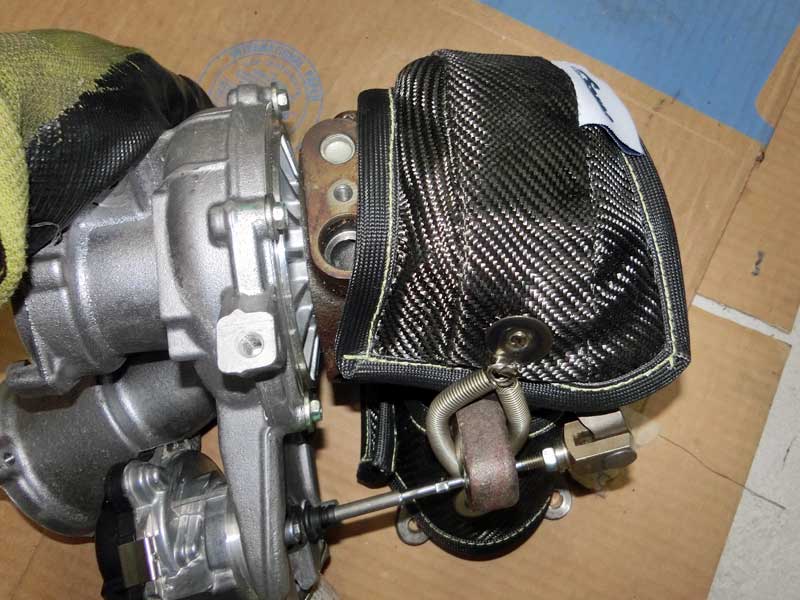
In the first test I compared boost pressure onset before and after installing the blanket onto a Shuenk IS38+ turbocharger. For this post I am evaluating the temperature data that was recorded within the engine compartment and along the air intake path during the boost onset data collection.
According to product vendors, benefits of installing the blanket onto the turbocharger that are related to this test are:
- Lower underhood temperatures
- Limits heat soak of nearby components
- Lower intake air temperatures
Test Procedure:
The GTI was driven to a location where it could be operated at a low RPM in third gear and then briefly accelerated at full throttle to allow boost pressure to build past 20 psi. The drive before the boost cycle testing began allowed time for coolant and oil temperatures to increase, as well as underhood temperatures. The boost onset test was repeated approximately twenty times at different engine speeds.
Temperature at various locations as described in the test plan were recorded throughout the test.
Test Results:
Comparing the before blanket install and after blanket install temperature readings at each of the temperature sensor locations is shown in the following series of charts.
The first sensor location is over the turbocharger as shown in the following picture:
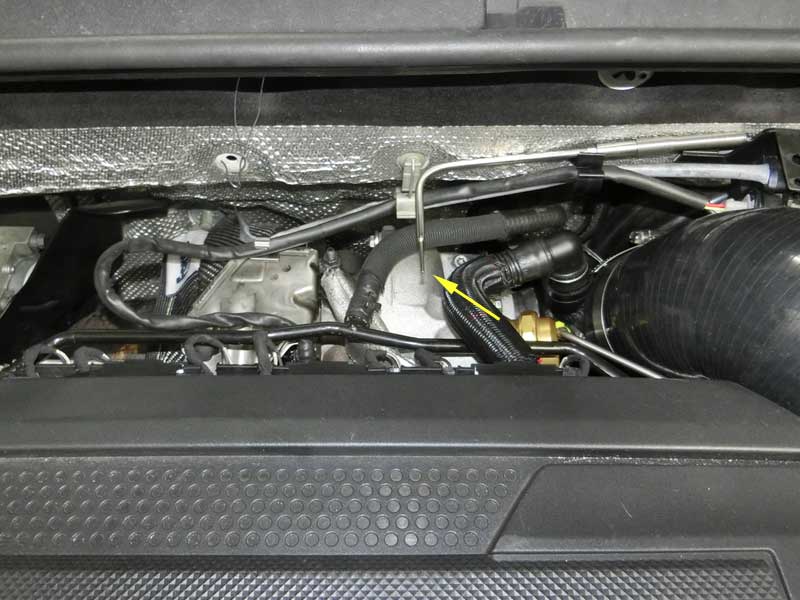
The temperature reading at this location throughout the boost onset portion of the drive is shown on the following chart. Additional data about the Outside Air Temperature and Boost Pressure are included on the chart.
Note: The number of boost events and time between events are close but not equal.
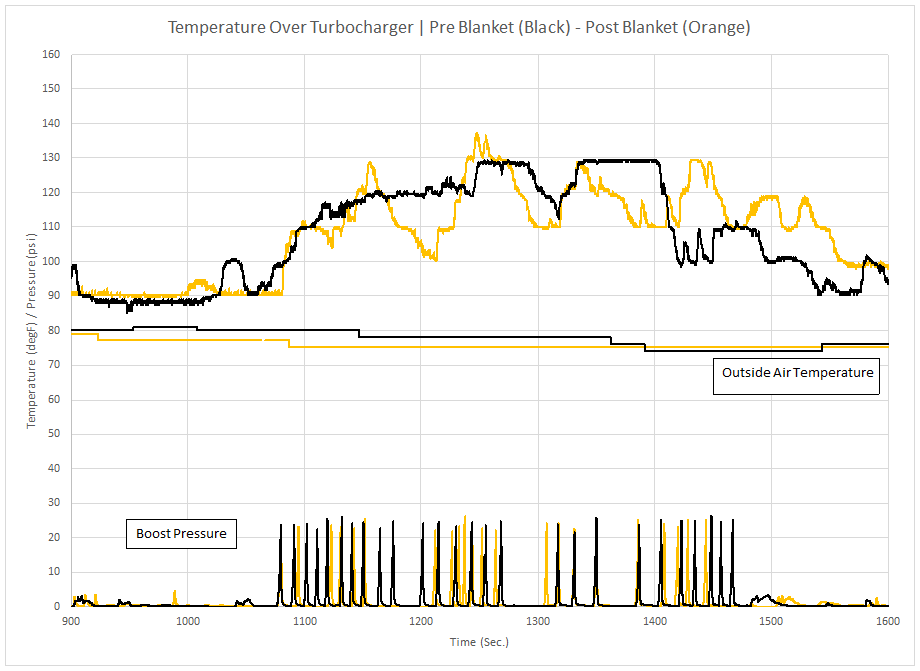
Small differences in temperature are observed that possibly correlate with the time interval between the boost events. The “post” blanket test had three instances of longer periods of time between events.
At time 1400 the Pre-Blanket over turbo temperature shows a sudden, unexplained drop, during a series of boost events. Possibly a cooling fan activated.
There is no clear difference between the before and after Over Turbocharger temperature during this test.
The following chart shows the temperature at the inlet to the turbocharger compressor housing.
The reading is made by a temperature probe that is installed in the Turbo Inlet Elbow. This reading enables evaluation of the affect of the turbo blanket on the temperature of the Airbox and Turbo Inlet Hose, which the outside passes through on the way to the turbocharger.
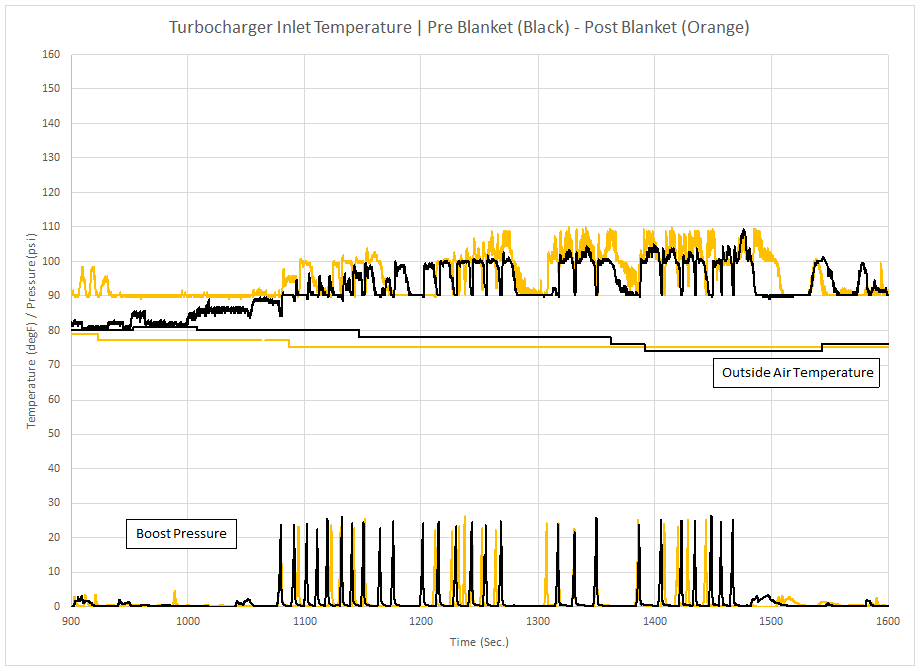
The Post Blanket air temperature during the later three quarters of the test has a slightly higher average maximum peak, approximately 109 degF versus approximately 104 degF in the Pre Blanket test. The differences are small and may be correlated with the test procedure – periods out of boost generate less airflow through the intake which could cause the air temperature to rise slightly compared to that at a higher airflow.
The next chart shows the turbocharger compressor outlet temperature.

There is no clear difference between the Pre and Post Blanket turbo outlet temperatures during the boost events.
The difference at the left side of the chart is due to the amount of time taken to get to the test location, longer for the Post Blanket test than the Pre Blanket test. It has been observed during normal operating that the turbo outlet temperature usually stabilizes around 130-140 degF.
Next is the Intercooler Outlet Temperature recorded in the cold side charge pipe.
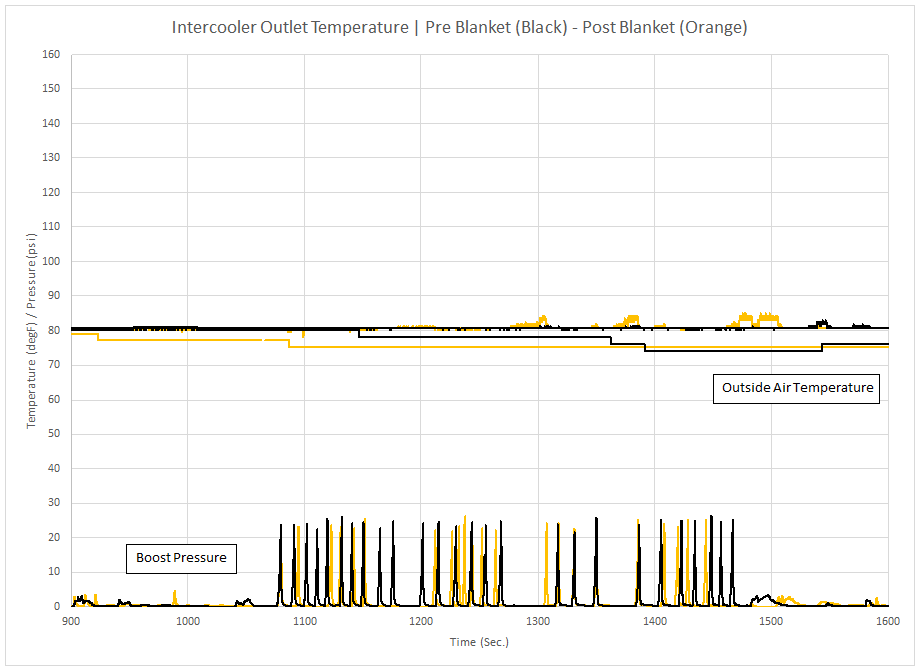
There is no significant difference in this temperature reading between the Pre and Post test readings.
Next is the underhood air temperature in the area between the intake manifold and the stock air intake duct along the grill.
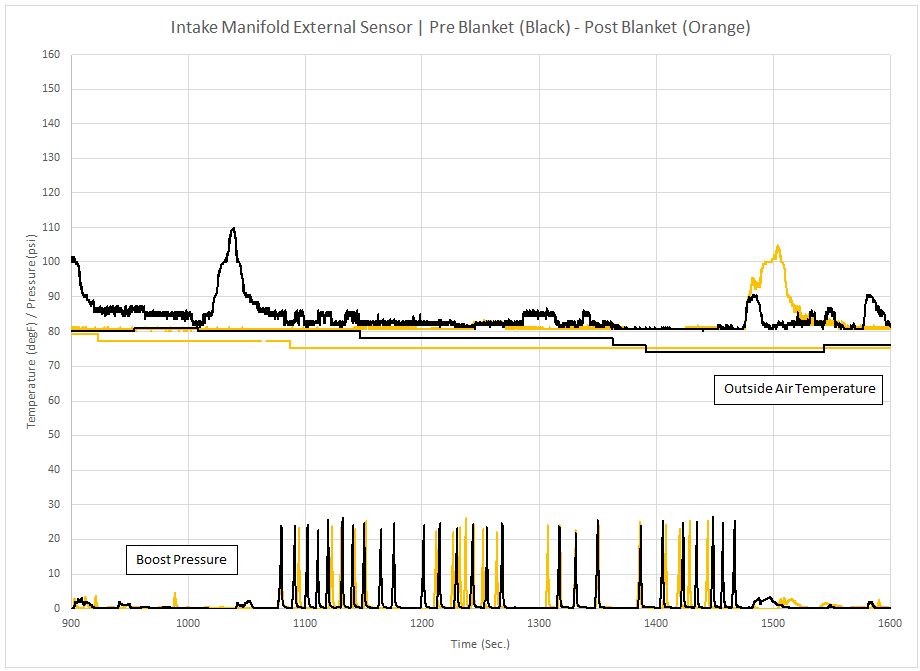
There is no significant difference in the temperature at this location between the Pre and Post test readings.
Last is the Intake Air Temperature recorded inside the Intake Manifold by the vehicle sensor.

No significant difference between the Pre and Post test temperatures are observed.
Conclusion:
Under the operating conditions of this test there are no conclusive temperature differences between the Pre and Post blanket test cases at any of the sensor locations within the Mk7 GTI engine compartment and air intake path.
The vendor claims of lower underhood temperatures, lower intake air temperature, and limited heat soak of nearby components are not supported by the results of this test using an IS38+ equipped Mk7 GTI.
Note: The readings being compared during this test were made after approximately 20 minutes of driving time. An additional test case will be performed where the GTI is driven for a longer period of time to evaluate if there is an affect of the blanket on the temperatures at these locations.

More spurious vendor myths busted, Jeff. We’ll be sure to pass along your findings to customers who ask for advice.
Doug Harper
FrankenTurbo/Shuenk